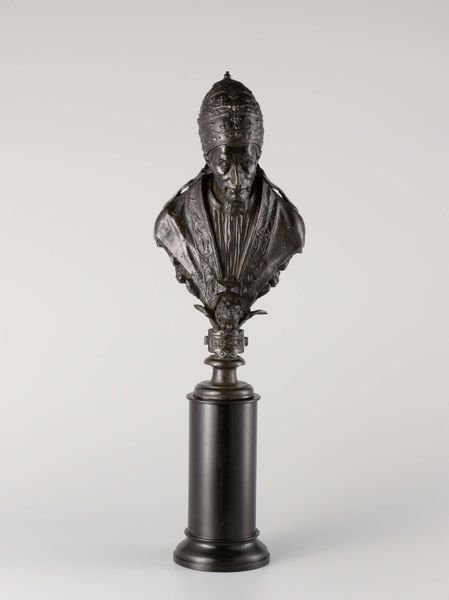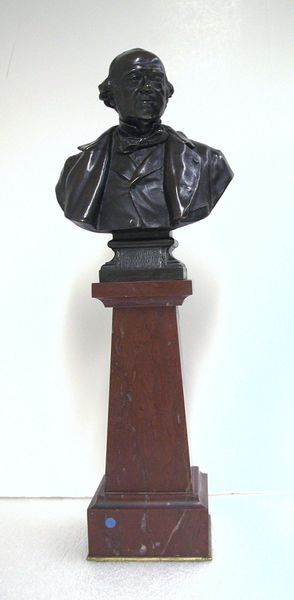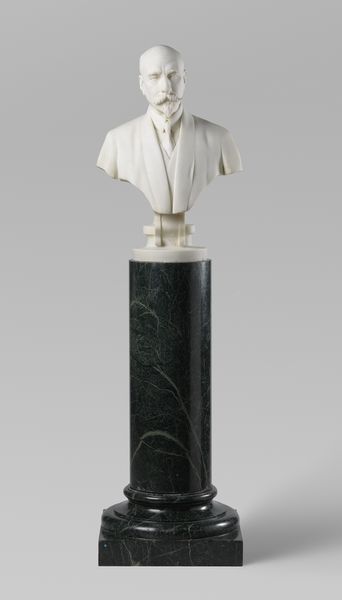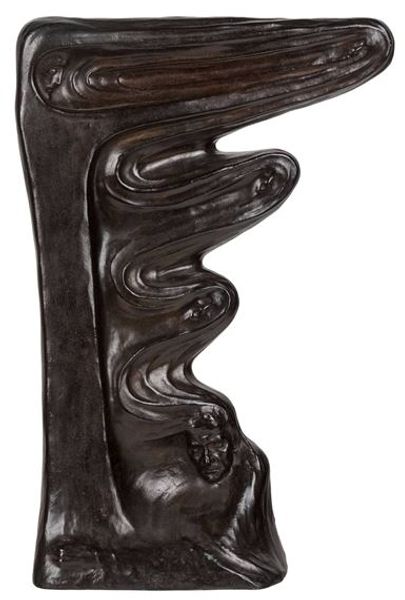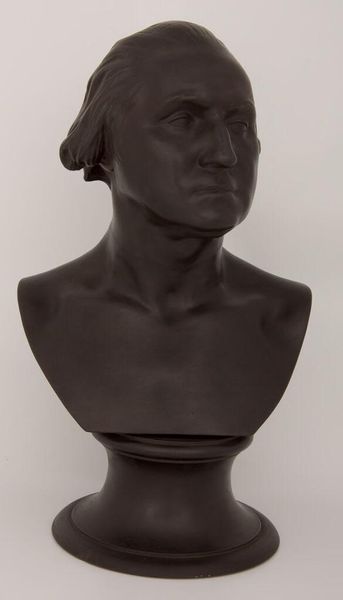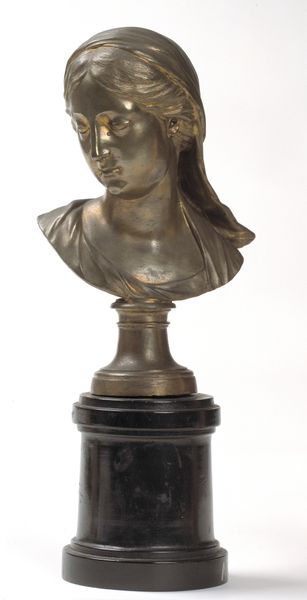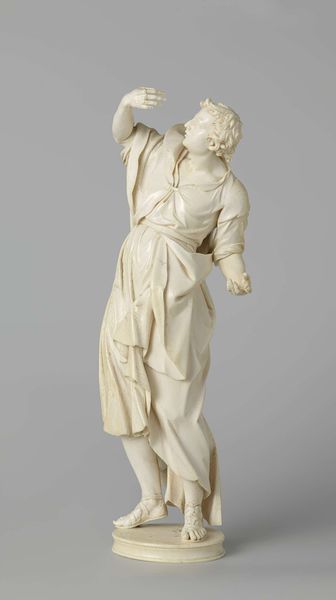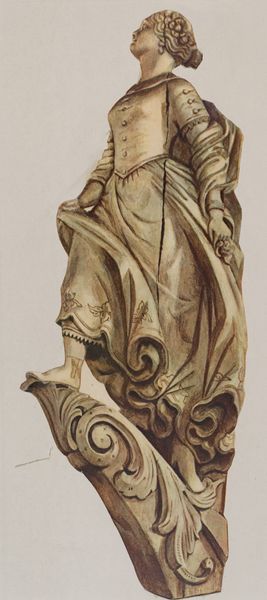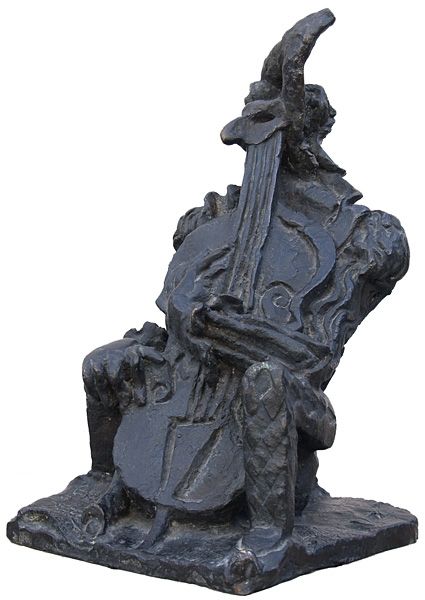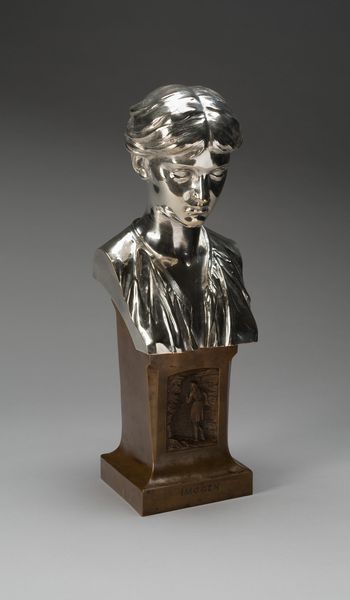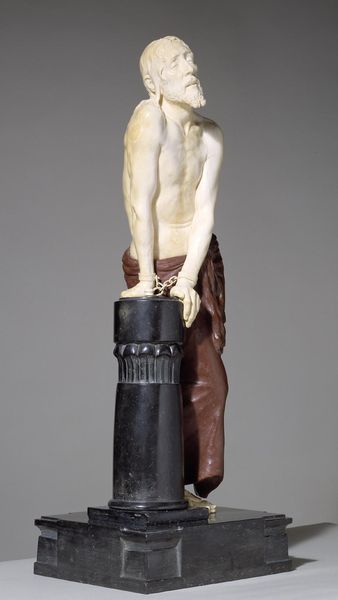
Dimensions: 5.9 x 5.6 x 3.2 cm (2 5/16 x 2 3/16 x 1 1/4 in.) with base: 12.6 x 5.6 x 3.2 cm (4 15/16 x 2 3/16 x 1 1/4 in.)
Copyright: CC0 1.0
Editor: This is a small black basalt bust, "Pindar," made by Wedgwood around 1759. It has such a serious demeanor. What can you tell me about the materials and how they might reflect the context of its creation? Curator: Wedgwood's basaltware cleverly emulates ancient bronzes, but it does so through industrial means. Consider the socio-economic implications: how does mass production democratize or perhaps cheapen classical ideals? Editor: So it’s less about individual artistry and more about the means of production? Curator: Exactly. Think about the division of labor, the access to materials, and the intended market. It speaks volumes about 18th-century industrial ambition and the burgeoning middle class. Editor: That really changes how I see it. It's not just a bust, but a product of its time. Curator: Precisely! It makes you consider the market forces at play.
Comments
No comments
Be the first to comment and join the conversation on the ultimate creative platform.
